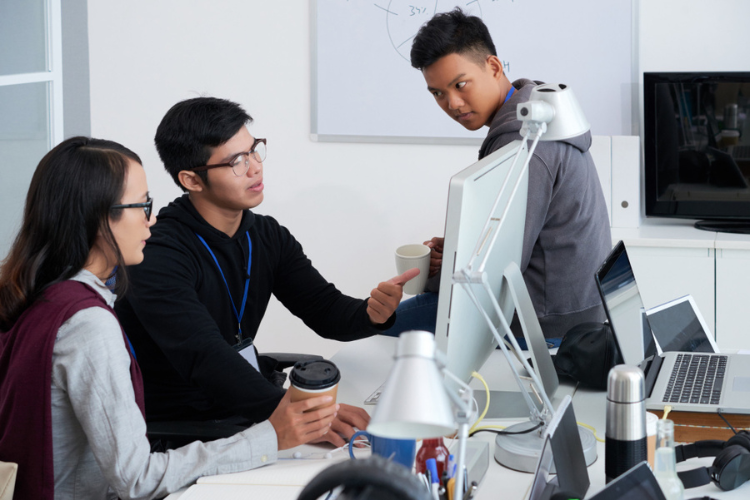Table Of Contents
Why Every DevSecOps Team Needs an AI Testing Strategy Now?
Last Updated on: June 13th, 2025
Security threats are evolving faster than ever, and most teams still rely on testing processes that haven’t caught up.
If you’re part of a DevSecOps team and you’re not seriously planning for AI-led testing, you’re already falling behind.
Traditional approaches can’t keep up with today’s complex environments. They’re reactive, time-consuming, and often limited by human bandwidth.
The pace of development isn’t slowing down. Neither are attackers. That’s exactly why forward-thinking teams are building AI into their security testing processes.
Not as a buzzword, but as a core part of how they scale, adapt, and protect critical systems, AI in DevSecOps is necessary.
What Are The Limitations Of Traditional Security Testing?
Conventional testing tools and workflows were never designed for today’s landscape. DevSecOps relies on continuous integration and continuous delivery (CI/CD).
However, security testing still lags behind in many teams, often bolted on as an afterthought instead of being built in from the start.
Here’s where things tend to fall apart:
- Manual testing struggles at scale – Human-driven testing can’t match the volume or speed of modern pipelines.
- False positives drain time – Analysts waste hours investigating issues that aren’t actually threats.
- Delayed feedback loops – Security issues are often found late in the cycle, leading to rushed fixes or worse, production rollbacks.
- Gaps in threat detection – Static rule sets can’t account for new or sophisticated attack patterns.
- Inconsistent results – Quality varies depending on the tester, their workload, and experience level.
These issues aren’t small inconveniences. These are signs that say the system is broken.
1. AI In DevSecOps: It Fits Naturally
The goal of AI in DevSecOps is to integrate security across every phase of the development lifecycle. Not just testing for vulnerabilities at the end, but constantly monitoring, flagging, and learning.
This is where AI makes a real difference. It doesn’t replace humans, it amplifies them.
By weaving artificial intelligence into the testing layer, security becomes faster, smarter, and more proactive. Here’s what that actually looks like in practice:
- AI models trained on vast threat data sets can identify patterns humans might miss.
- Machine learning improves over time, meaning detection becomes sharper with every iteration.
- AI can adapt to the unique context of your codebase and architecture, reducing noise from irrelevant alerts.
- Automated testing powered by AI operates continuously, not just during release phases.
This transforms how teams operate. Testing isn’t a blocker anymore. It becomes an intelligent part of the flow.
2. The Case For AI Security Testing
Security isn’t a fixed checklist. It’s a moving target. Attackers constantly test new tactics, find new entry points, and exploit new weaknesses.
Defending against that with static testing methods just doesn’t work anymore. That’s where AI security testing steps in.
It introduces agility, insight, and speed into a process that desperately needs all three. When integrated properly, AI helps DevSecOps teams:
- Spot vulnerabilities earlier in the development lifecycle
- Reduce noise by filtering out false positives
- Prioritize issues based on risk, not just presence
- Detect emerging threats without needing constant rule updates
And just as importantly, it scales. Whether your team is deploying twice a week or ten times a day, AI-driven testing keeps pace.
Human testers can’t. Not because they aren’t skilled, but because there’s just too much to cover manually.
How AI Testing Builds Long-Term Resilience
Beyond the immediate wins of speed and accuracy, AI helps teams build more resilient systems over time.
This matters more than ever as applications become more complex, distributed, and reliant on third-party components.
Here’s why AI testing strengthens long-term security strategy:
- Learns continuously – Models improve with every dataset, every test, every result.
- Adapts quickly – As attack methods evolve, so does detection logic.
- Standardizes quality – Testing remains consistent, regardless of who runs it or when.
- Supports compliance efforts – AI can help maintain logs, track vulnerabilities, and generate evidence faster than manual processes.
Security isn’t just about catching the next vulnerability. It’s about creating a structure that can weather whatever comes next.
That includes supply chain risks, zero-day exploits, and misconfigurations introduced by other systems. AI testing helps identify and address all of these with less delay.
What Happens If You Don’t?
Let’s be blunt. Delaying AI adoption in security testing won’t keep things stable. It will leave your systems exposed.
Teams that stick to outdated methods often find themselves reacting instead of preventing, patching instead of protecting.
Some of the real risks include missed threats that get buried in large codebases, mounting technical debt from last-minute security fixes, and poor coordination between dev and security teams due to broken workflows.
Moreover, a slower response to compliance or audit requirements reduces trust from stakeholders or customers when incidents happen.
It’s not a hypothetical concern. These issues cost time, money, and sometimes reputations. DevSecOps was created to fix the disconnect between development and security.
But without modern testing methods, the gap only widens.
Make It Part of the Strategy, Not an Add-On
Too often, AI is treated like a bonus feature or something to “experiment with.” That’s the wrong approach.
To get real results, it needs to be part of the strategy from the beginning. Build it into how your team approaches testing. Make it part of your planning, tooling, and workflows.
Start by asking some practical questions:
- Where in your pipeline are security checks weakest or slowest?
- What types of vulnerabilities are most often missed?
- Are there recurring patterns of manual effort that could be automated?
- How quickly can your current setup detect and respond to a new threat?
Once you understand those gaps, AI can be used to fill them, not with hype, but with tested, scalable solutions that evolve alongside your code.
Future-Proofing with Intelligence
The security threats of tomorrow won’t wait for your team to catch up. They’ll keep shifting, growing, and testing boundaries. So the only real answer is to shift faster.
By investing in AI in DevSecOps, teams set themselves up for long-term success. This isn’t about chasing trends or replacing people.
It’s about building systems that can think, learn, and react at a level no human team can match alone. Security can’t be static anymore. It needs to be smart, and that starts with strategy.
Read More:















